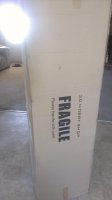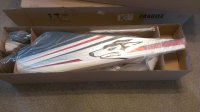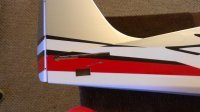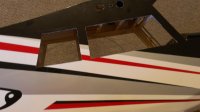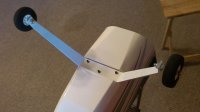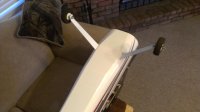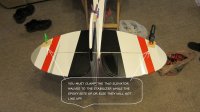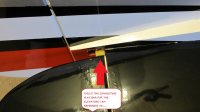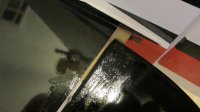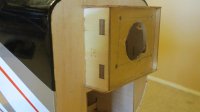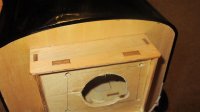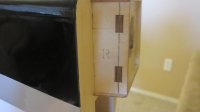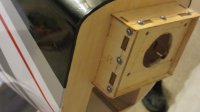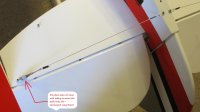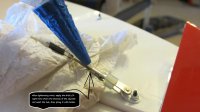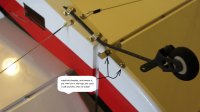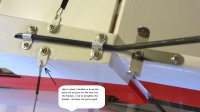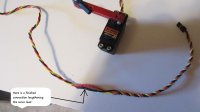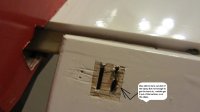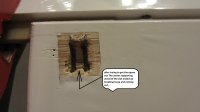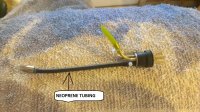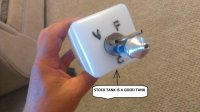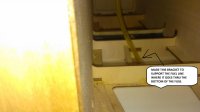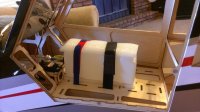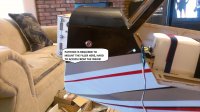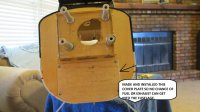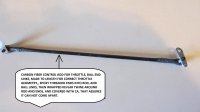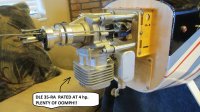My 3DHS BIGFOOT build STARTED AUG 3rd..
Hello all,, I am posting my build from another forum on my bigfoot that I have been working on for about a week now, this post moves quick because I am listing a lot of work all at once IF YOU HAVE ANY QUESTIONS FEEL FREE TO ASK I WILL DO MY BEST TO ANSWER
I was looking for a high wing plane that I can help my wife learn better on so she can fly at big bird fly ins, and of course one that I can put on high rates and have some fun with it,, I decided to go with the bigfoot because of its aerobatic capabilities and huge flaps for slow flying, I believe it is a much better flying plane than a decathalon and easily more than a cub when it comes to its limits. I am going to post up my build of my new 3dhs bigfoot, I plan on taking alot of pics, and describing what I Like and dont like about the plane, and including actual costs,,If you are interested keep reading I will try to cover everything completely. be patient because I work rotating shifts, and will work on it when I can, but I hope to have it done in around a month
I have built about 12 planes now, most arfs and two were complete rebuilds including structure repair, I dont proclaim to know everything, but I am very confident in my skills and abilities, I am an industrial maintenance tech by trade so you may see some Ideas that are a little different but they work,,so I will proceed.
Got the plane today, I pre-ordered it from 3dhs and got free shipping, it looks like it sold out on the presales,, dont think you can get one, I settled on the black one,
Arrived Double Boxed, and in good shape, opened the box to start the inspection, plane is packaged in very well, and secure, inspection revealed no damage to plane at all.
Hardware looks adequate, color scheme is terrific, plane comes with graphics, I dont believe I will be using any of the graphics, maybe a few of the small ones but none of the larger ones. Sturdy aluminum gear, carbon fiber wing tube, all seams on covering look good and the lines match up very well. The wings already have the hinges for the ailerons and flaps glued in, although it appears as though one of my flap hinges is broken, I will deal with this later, the hinges are like robarts, not dubro, and not junk CA hinges. However the door on the side is held on with CA hinges, since this is not a conrtrol surface and has no load, they will work great. The side door has the hinges, and magnets to keep it closed, the top hatch is also hinged, and has magnets, so getting to the wing bolts and plugging in the connections should be a breeze as there is plenty of room.
thats it for today, gotta get some sleep
current costs,, Plane $540 to my door
Hello all,, I am posting my build from another forum on my bigfoot that I have been working on for about a week now, this post moves quick because I am listing a lot of work all at once IF YOU HAVE ANY QUESTIONS FEEL FREE TO ASK I WILL DO MY BEST TO ANSWER
I was looking for a high wing plane that I can help my wife learn better on so she can fly at big bird fly ins, and of course one that I can put on high rates and have some fun with it,, I decided to go with the bigfoot because of its aerobatic capabilities and huge flaps for slow flying, I believe it is a much better flying plane than a decathalon and easily more than a cub when it comes to its limits. I am going to post up my build of my new 3dhs bigfoot, I plan on taking alot of pics, and describing what I Like and dont like about the plane, and including actual costs,,If you are interested keep reading I will try to cover everything completely. be patient because I work rotating shifts, and will work on it when I can, but I hope to have it done in around a month
I have built about 12 planes now, most arfs and two were complete rebuilds including structure repair, I dont proclaim to know everything, but I am very confident in my skills and abilities, I am an industrial maintenance tech by trade so you may see some Ideas that are a little different but they work,,so I will proceed.
Got the plane today, I pre-ordered it from 3dhs and got free shipping, it looks like it sold out on the presales,, dont think you can get one, I settled on the black one,
Arrived Double Boxed, and in good shape, opened the box to start the inspection, plane is packaged in very well, and secure, inspection revealed no damage to plane at all.
Hardware looks adequate, color scheme is terrific, plane comes with graphics, I dont believe I will be using any of the graphics, maybe a few of the small ones but none of the larger ones. Sturdy aluminum gear, carbon fiber wing tube, all seams on covering look good and the lines match up very well. The wings already have the hinges for the ailerons and flaps glued in, although it appears as though one of my flap hinges is broken, I will deal with this later, the hinges are like robarts, not dubro, and not junk CA hinges. However the door on the side is held on with CA hinges, since this is not a conrtrol surface and has no load, they will work great. The side door has the hinges, and magnets to keep it closed, the top hatch is also hinged, and has magnets, so getting to the wing bolts and plugging in the connections should be a breeze as there is plenty of room.
thats it for today, gotta get some sleep
current costs,, Plane $540 to my door
Attachments
Last edited by a moderator:

